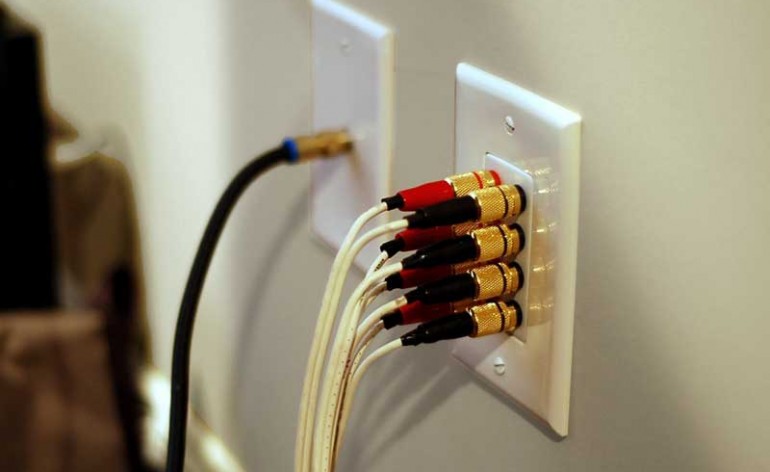Do You Really Need In-Wall Rated Cables?
You’ve discovered that it is important to run power to your projector or flat-panel TV safely. You don’t want to void your insurance! But that’s got you thinking. What about all those other wires? Do your other cables also have to be in-wall rated? If so, there are different in-wall ratings. Which do you need? Let’s discuss.
Short Answer
The short answer is that any cable that is placed in a wall needs to be in-wall rated. This is simply because of insurance. See, if there is a fire in your home, they want to make sure your wires didn’t contribute or make things worse. Wires that aren’t in-wall safe can help fires spread more quickly and give off toxic smoke making fighting the fire more difficult. If you are going to put a wire in the wall, make sure it is in-wall rated.
If you aren’t planning on running your cables in-wall, then don’t pay extra for the in-wall rating. It won’t make things sound or look any better.
In-Wall Ratings
Once you decide to get in-wall rated AV cables, you’ll notice that there are lots of different in-wall ratings out there. The two most common we see are CL2 and Plenum. Sometimes these seem to be the same, other times the plenum will cost more. But those aren’t all the in-wall ratings that are out there.
CL2 Rating
The different ratings really indicate different applications. CL2, for example, means a wire is perfectly fine to run in a wall in a residential home. You can pretty much stop there and just look for CL2 (it stands for Class 2 but that doesn’t really matter here). But we know some of you will want to be “extra safe.” If a wire that is labeled “plenum” is more expensive, does that mean it is more safe?
Plenum Rating
Not really.
A “plenum” is really just an air return area. See below from Blue Jeans Cables:
A “plenum,” under Article 100 of NEC, is “a compartment or chamber to which one or more air ducts are connected and that forms part of the air distribution system.” The most common “plenum” space one sees in a/v installations is a dropped ceiling space in a commercial building, being used as a ventilation return. Most residences do not have any significant plenum spaces, so this is rarely a consideration in a residential installation
If you are going to run your wire inside an air distribution area (very uncommon in residential home theater), you’d need a plenum rating. Since you aren’t, don’t pay extra for it. It won’t make the wire any more safe to run in your walls.

Riser Rating
Lastly, you may see a wire with a “riser” rating. In home theater, a riser is something we use to elevate our second row of seats. In the case of wire ratings, a riser is the separation between two floors of a home. If you live in a multi-story home, you may think you need in-wall cables with a riser rating. Again, not so. From Blue Jeans again:
A riser presents a bit different situation, governed by 725.61(B). If you’re in a single or two-family dwelling, CL2, CL3, CL2X and CL3X may be used
Riser-rated cables only really apply to multifamily (think highrise apartments) or commercial properties. In your home theater, CL2-rated wire will most likely be all you need.
Speaker Wire
The thing about speaker cables is that most of it can be safely (and legally) run in-wall even without a CL2 rating. It is carrying a low voltage signal so the rules tend to be laxer. You’ll have to check your local ordinances to know for sure. But, to be safe, always look for an in-wall rated speaker wire. It usually isn’t that much more expensive and is usually higher quality.
Take Away
Of course, you always want to err on the side of safety. If you are running your AV cables in a wall, look for some sort of in-wall rating. The key here, however, is not to overbuy a cable with a higher rating simply because it seems like it would be safer. That’s not how it works. In home theater, CL2 rating is all that you need.


